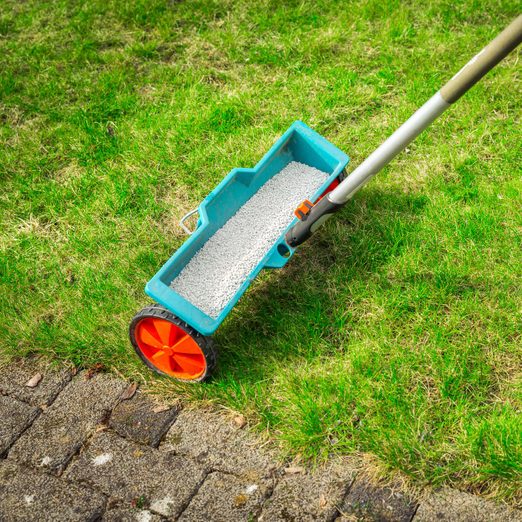How to Fertilize a Lawn
Updated: Apr. 16, 2024
From soil testing to cleaning up and protecting waterways, here are the steps for properly fertilizing a lawn — including how to make it even easier.
For an average-size lawn: an hour or so - one to four times a year
Beginner
$70 to $400
Introduction
Each year, Americans spend billions of dollars on lawn fertilizing to make sure our grass grows green and dense. That includes buying 90 million pounds of fertilizer. "In urban settings, soils are typically lacking the required nutrients for plants and lawns to stay healthy," says Marc Mayer, Director of Technical Operations at TruGreen. "Soil amendments and fertilizers help to reestablish a nutrient bank in the soil."
But, we're probably also overdoing it, says Craig Elworthy, founder of Lawnbright. "Using a large bag of synthetic fertilizer has become a crutch, a shortcut to a great lawn," he says. "But it's not sustainable for your lawn or the planet."
That said, everyone agrees that a little nitrogen can be good for thickening up your lawn and crowding out weeds. Here's how to find that perfect balance when it comes to lawn fertilizing.
When and How Often Should I Fertilize My Lawn?
It depends on where you live and the type of grass and fertilizer you're using. For many, that means starting in the spring. "In the spring, apply just enough fertilizer to help green up your lawn," says Churchill. "About half the normal amount will do."
If you have a cool-season lawn like Kentucky bluegrass, perennial ryegrass or tall fescue, fall is another key time to apply nutrients. This will help replenish food reserves after a year of growing and before winter sets in. For warm-season lawns, like bermudagrass and centipede grass, you'll want to fertilize during the summer and apply potassium in the fall to help the turf through the winter, says Mayer.
Elworthy, who lives in Massachusetts, applies a slow-release organic liquid fertilizer every eight weeks, starting in late April. He also mulches his clippings, which cycles nutrients back into the soil.
"Since I mulch the clippings, I only need to use a small amount of actual fertilizer a few times during the growing season," he says. "Healthy soil, mowing and watering are much more important for a healthy lawn, so if you can get those cultural practices right, you hardly need much fertilizer at all."
When To Call a Pro
It can save some hassle to consult a pro at least once, to learn a good regimen for your particular situation. "Lawn care is rarely, if ever, one-size-fits-all, and the same goes for fertilization timing," says Mayer. "Homeowners can tap a lawn care professional to plan a proper fertilization regimen that's tailored for their lawn."
Other reasons to call a pro include:
- Unexpected weather, like flooding, drought and freezing
- If you need heavy machinery, like aerators
- If you have a very large lawn, or a large renovation planned
- If you travel a lot or are otherwise short on time
Tools Required
- Garden hose (for liquid fertilizer)
- Spreader (for granular fertilizer)
Materials Required
- Fertilizer (liquid or granular)
- Water
Project step-by-step (6)
Test Your Soil
Start with a soil test, so you know your soil’s pH and what nutrients it’s deficient in, such as potassium and phosphorus. “Most lawn-care newcomers will just grab a bag of fertilizer, but it’s crucial to understand what your soil needs,” says Elworthy. “Otherwise you’re wasting money and polluting the environment by adding excessive nutrients that will run off into the surrounding watersheds.”
Test in early spring, just before your lawn comes out of dormancy, then choose a fertilizer to match its needs. Also, if your pH is not between 6.2 to 6.9, you’ll need to apply either lime or elemental sulfur, says Elworthy. “Otherwise your grass won’t accept nutrients well and your fertilizer application will have little to no effect,” he says.
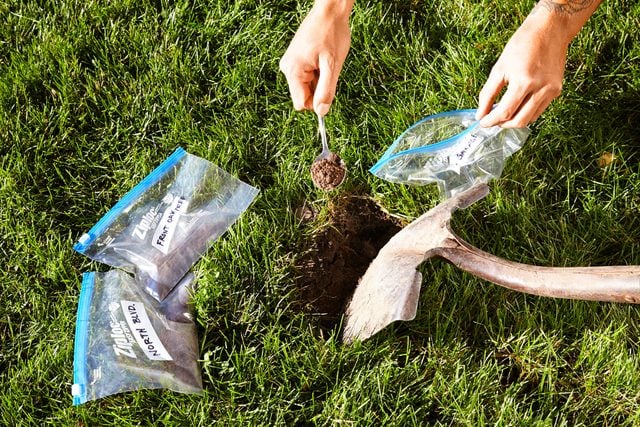
Choose A Fertilizer
Fertilizers come in either granular or liquid form. Granular requires a spreader, while most liquids attach to a garden hose. “It comes down to a matter of preference,” says Elworthy. “I usually choose liquids because they’re easy and it also irrigates the lawn.”
Elworthy also prefers organic fertilizers, which are often more environmentally sound, plus less likely to burn the grass. It may take a bit longer for your lawn to respond to them, but in the long run, they stimulate greater microbial activity in your soil, which will make your lawn more resilient and eco-friendly.
Also choose a fertilizer based on the results of your soil test. Closely follow the instructions on the label and consider local ordinances. “For example, most communities near a body of water will limit the use of phosphorus to avoid upsetting the delicate ecosystem surrounding lakes and rivers,” says Elworthy.
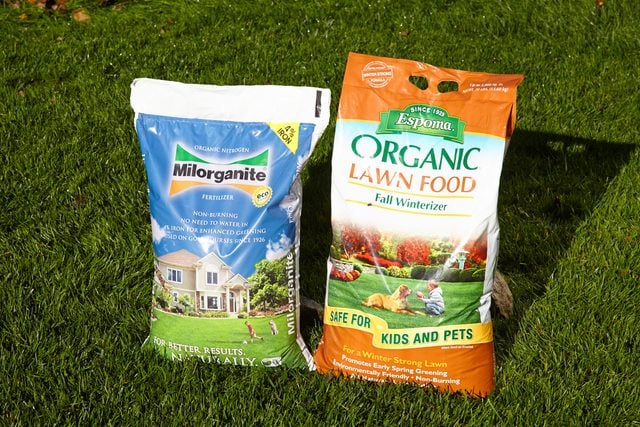
Apply The Fertilizer
“I bet at least three out of every five homeowners use way more lawn fertilizer than they should,” says Churchill. That harms soil, burns grass, contaminates groundwater and causes algae blooms.
To ensure you’re using the right amount, calibrate your spreader and dial back the rate of lawn fertilizer applications to half, says Churchill. Then make two passes with your spreader at right angles. “Many retailers promote a four-step lawn fertilizing schedule,” he says. “Fertilizing more than four times a year is overkill. Most homeowners could get by with two.”
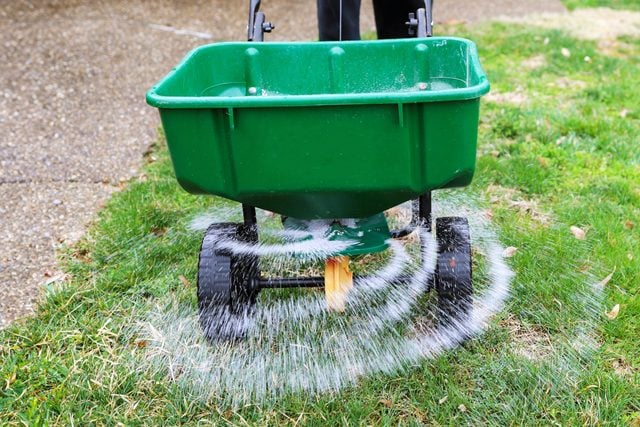
Water Down Your Lawn
After each application, sprinkle at least 1/4 inch of water over your lawn, which helps get the product into the root zone, says Elworthy. “If you leave synthetic fertilizers on the lawn for too long they will gas off into the atmosphere and you will have wasted the application,” he says. Also, have patience. “Nothing happens quickly in lawn care. It’s ultimately a hobby, so enjoy it!”
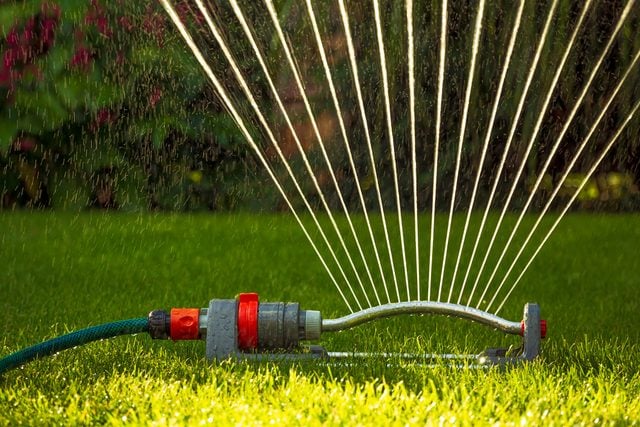
Clean Up
After you’re done fertilizing, sweep up what remains on hard surfaces, such as your driveway, sidewalk or street. If fertilizer is left on these surfaces, rains will eventually wash it into water features and storm sewers. “In short, be a good environmental steward,” says Churchill.
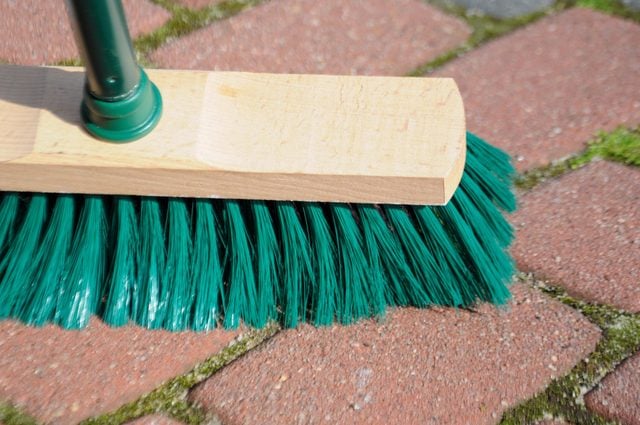
FAQ
Can you over-fertilize your lawn?
Yes. Excessive nitrogen and other fertilizer components can harm your turf. Especially avoid quick-release fertilizer, which can burn a lawn, says Elworthy.
How do you choose the best lawn fertilizer?
It depends on your region and grass type, but in general choose a slow-release version.
What mistakes should I avoid when fertilizing my lawn?
- Avoid selecting the wrong fertilizer for your lawn type.
- Don’t neglect getting a soil test, and don’t test soil after you’ve fertilized.
- Don’t just guess how much fertilizer to use, apply too much, or too frequently.
- Avoid applying fertilizer near water and wetlands (stay at least eight feet away).
- Don’t apply on hard surfaces and frozen ground.
- Avoid using phosphorus unless your soil test indicates a deficiency.
- Don’t bag your clippings — instead, mulch them.
About The Experts
Marc Mayer is the director of technical operations at TruGreen. He has 28 years of experience in the green industry, including with professional sports turf, international golf course care and horticulture maintenance.
Craig Elworthy is founder of Lawnbright, a DIY lawn care company, featuring all-natural products that are safe for kids and pets.
Joe Churchill has worked in the professional turf industry for more than 30 years. He is the Senior Turf Specialist for Reinders, a major turf supply and equipment distributor in the Midwest.

